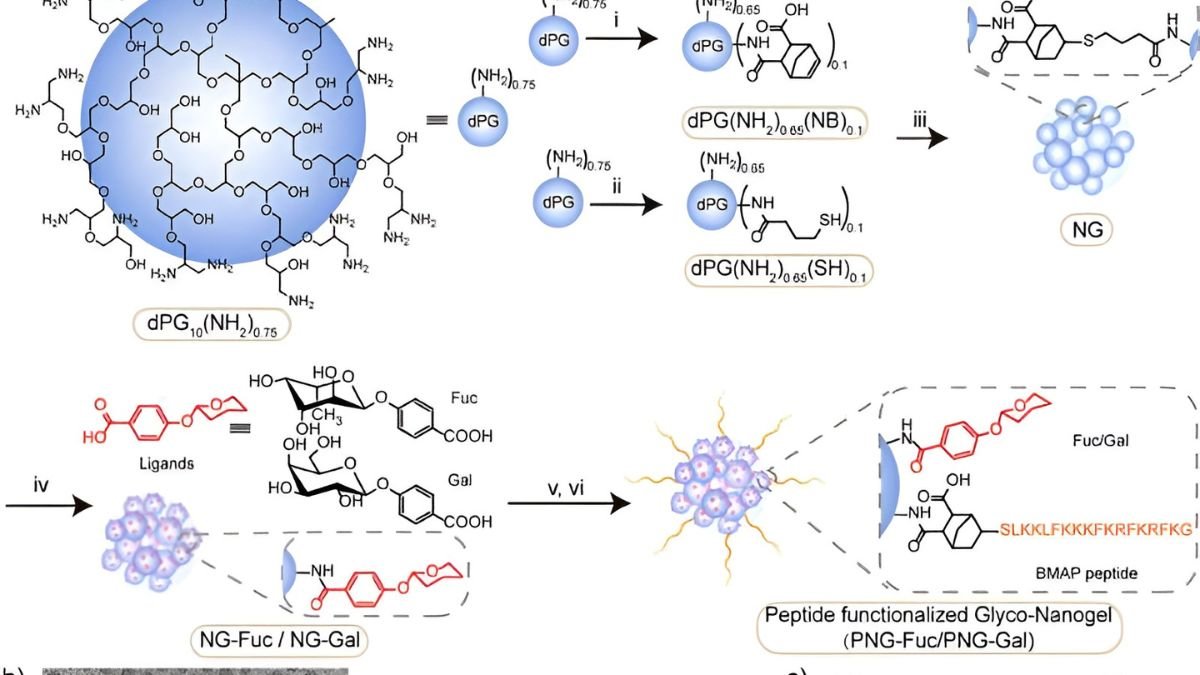A New Hope Amidst Antibiotic Resistance
However, as antibiotics lose their effectiveness, a research team at Swansea University has built a brand new technology that eradicates dangerous bacteria. This technology kills extremely resistant strains, such as Pseudomonas aeruginosa, by approximately 99.9%.
New Technology: Hetero-Multivalent Nanogels
The innovation is based on a flexible nanogel formed by crosslinking polymers and incorporating specific sugars (galactose and fucose) and antimicrobial peptides. This entire system works synergistically to recognize and destroy bacteria.
How does this nanogel function?
The sugars within the nanogel bind to specific proteins present on the bacterial surface, thus allowing the channeling of the nanogel in a straight path towards its targets. Once on target, the peptides then pierce through the bacterial membrane and cause a rapid demise to bacteria—a treatment for the healthy cells around.
Stunning Results from State-of-the-Art Testing
The technology was evaluated using flow cytometry, scanning electron microscopy, and confocal microscopy. These evaluations suggested that the nanogel:
- Killed >99.99% of P. aeruginosa (free-floating bacteria)
- Killed over 99.9% of biofilm-coated bacteria within 12 h
Also exhibited impressive potency against other two dangerous microorganisms E. coli and MRSA.
A Solution Towards Biofilm and Drug-Resistant Infections
Alginate biofilms and multi-drug-resistant bacteria infection enter the most significant medical challenges of the present day. This nanogel technology offers a completely new and very effective way to circumvent these two challenges; it can thus form the basis for future antibacterial therapies.
Researchers’ Reaction
Sumati Bhatia, a chemist and lead author of the research, affirmed how extremely inspiring it was to work with international collaborators. According to them, this research opens a new frontier for fighting dangerous bacteria using glycan-based polymer systems.
Result of an International Collaboration
This discovery has been made possible because of joint efforts by scientists from Swansea University and Freie Universität Berlin, bringing together the know-how in glycochemistry, polymer science, and nanotechnology.
Conclusion
This new nanogel technology holds great potential for changing the tide against antibiotic resistance; its impressive efficiency holds promise for revolutionizing modern medicine in the face of various infections that are difficult to control using current drugs.
